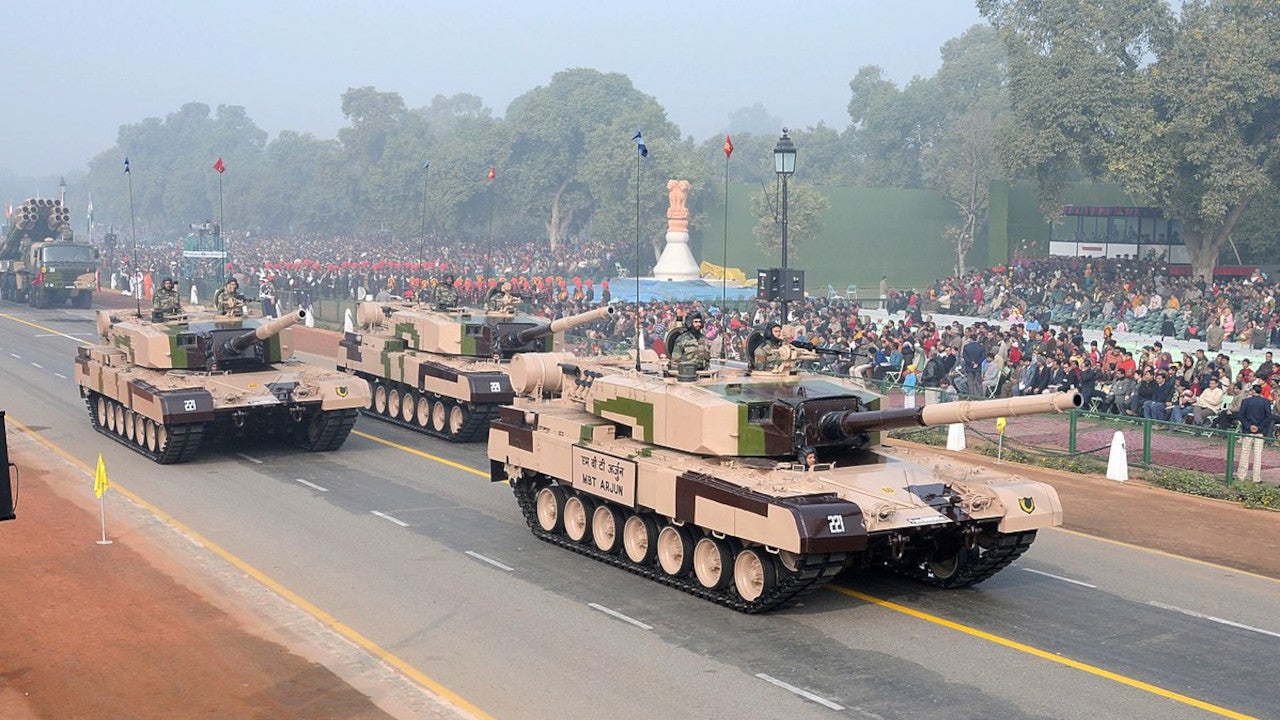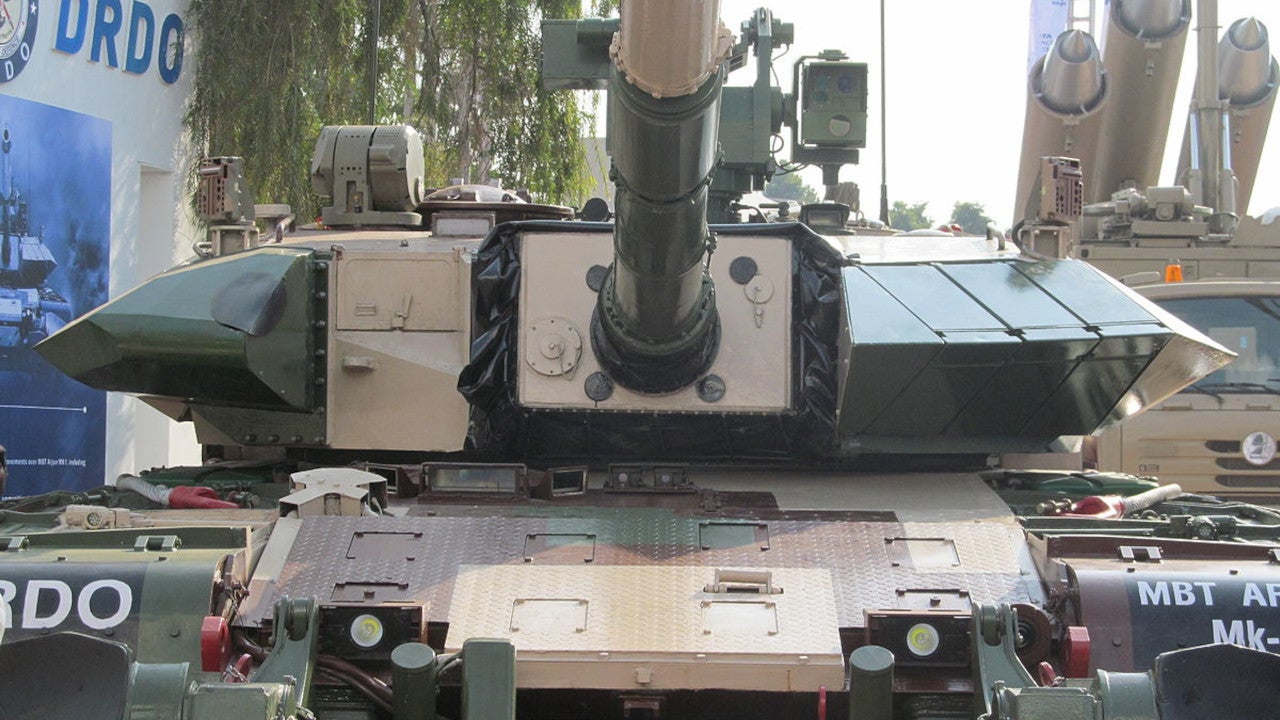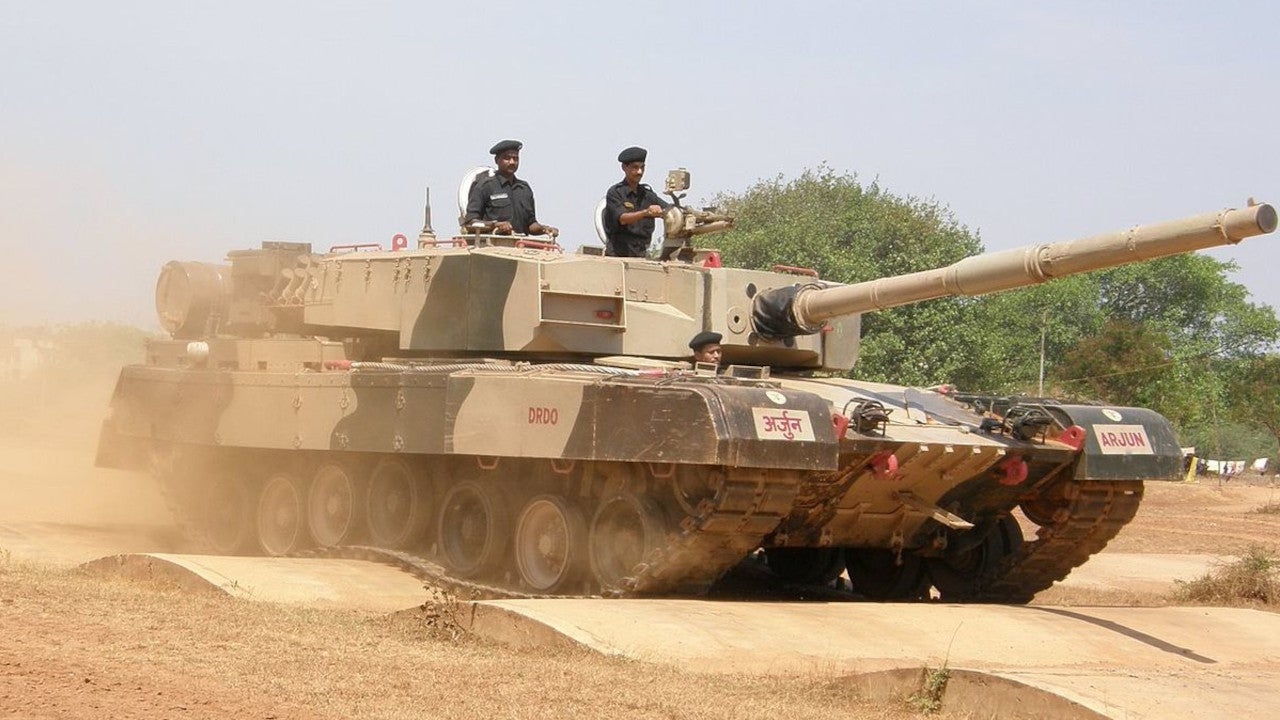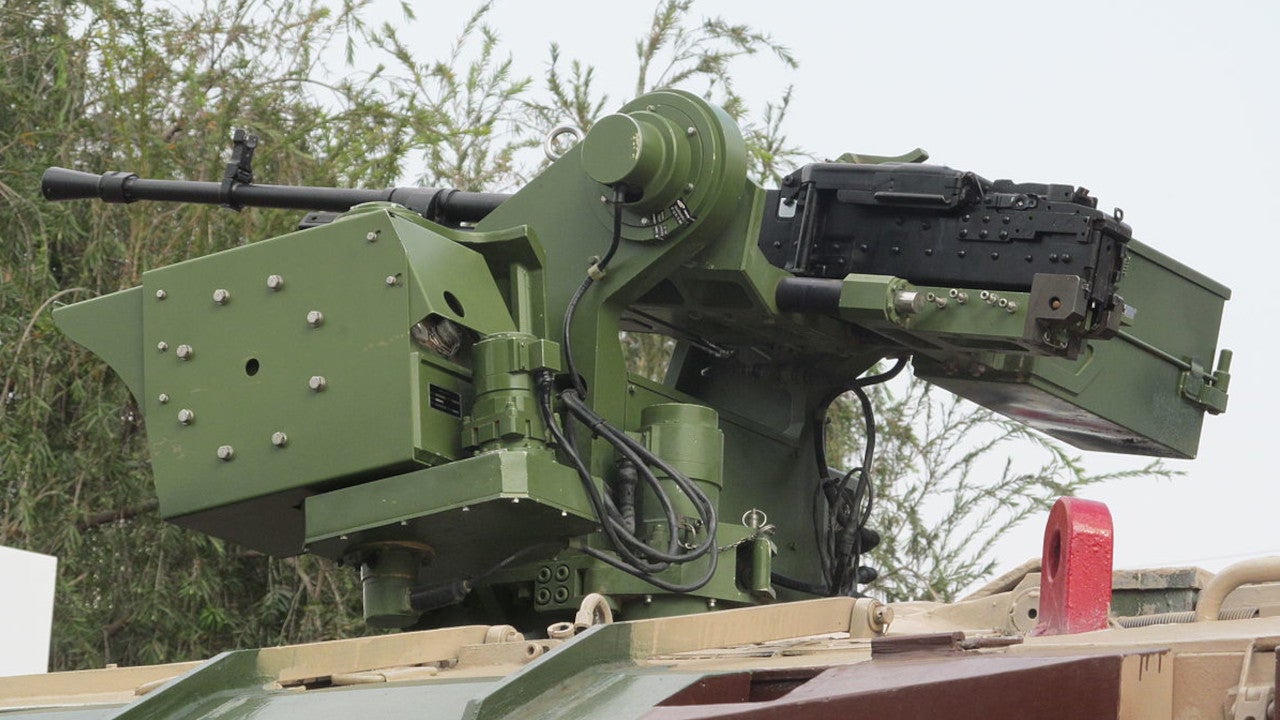The Arjun main battle tank (MBT), named after the warrior prince Arjuna in the Indian epic Mahabharata, was developed by the Defence Research and Development Organisation (DRDO) for the Indian Army.
It has been developed under a multi-laboratory programme of DRDO mainly at the Combat Vehicles Research & Development Establishment (CVRDE) facility.
The development of Arjun Mk1 was followed by improved variants Mk1A and MkII. Arjun Mk1A, which features improved firepower and transmission systems, completed the final integration tests in 2019 and was cleared for production.
The Arjun MkII variant is a light-weight futuristic main battle tank (FMBT) with electro-optical sensors and high-power lasers. It is being developed by DRDO with a total of 93 upgrades, as per the requirements of the army. The tank is seen as a potential replacement for the Army’s ageing Russian T-72 fleet of 2,400 tanks.
BEL unveiled a new weapon control system for the 12.7mm gun of the Arjun MkII tank, at Aero India 2017 Air Show held in February 2017.
Arjun main battle tank orders and deliveries
The Indian Army placed initial orders for 124 tanks in March 2000. The first batch of five tanks was delivered in August 2004 and a total of 45 had been delivered by May 2009. The army received all 124 tanks by 2011.
In March and April 2010, comparative trials on manoeuvrability of the Arjun MBT and the Russian T-90 tank in Rajasthan deserts resulted in a better performance from the Arjun tank. The Indian Army subsequently ordered another 124 advanced tanks in May 2010, this time MkII.
The Indian Ministry of Defence (MoD) is expected to order 118 Mk1A battle tanks at an estimated cost of Rs66bn ($888.7m).
Design
The development of Arjun MBT began in March 1974. The tank heavily depends on foreign technology and equipment. German Leopard 2 tank developer Krauss Maffei provided the design assistance. Hence, the Arjun closely resembles Leopard 2A4 tank.
Between 25% and 30% of the tank components, including engine, transmission, gun barrel, tracks and fire control system, are imported.
Armament
The Arjun MBT is equipped with an indigenously developed 120mm main rifled gun with fin stabilised armour-piercing discarding sabot (FSAPDS) and high-explosive squash head (HESH) ammunition.
An anti-personnel 7.62mm coaxial machine gun is fitted alongside the main gun and a 12.7mm machine gun is fitted at the top of the turret to aim aircraft and ground targets. An anti-helicopter round is also being developed to combat air threat to armour.
The tank has special containers to carry 39 projectiles of 120mm ammunition. These containers keep the ammunition away from the crew, providing an additional level of survivability.
The rear-side faces of the turret are fitted with up to 12 smoke grenade dischargers. The weapon systems can be operated in silent watch mode using an auxiliary power unit.
Arjun MBT self-protection
The newly developed Kanchan modular composite armour gives all-round protection to the tank from anti-tank ammunition. Kanchan has been manufactured by Defence Metallurgical Research Laboratory (DMRL) armour design and development division.
The armour is made of composite panels sandwiched between rolled homogeneous armour (RHA), which can defeat APFDS or HEAT rounds. The turret houses lightweight compact Kanchan armour.
An option is also available to add explosive reactive armour. Mobile camouflaging system (MCS) technology is also being developed by the DRDO in collaboration with Barracuda Camouflaging Limited.
Fire control and observation
The Arjun MBT is equipped with a computer-controlled integrated fire control system with a laser range finder. The system was jointly developed by BEL and IRDE. The day/ night stabilised sighting system is also incorporated in the system.
The targets are hit with high first-round-hit probability and reduced reaction time. The system is capable of acquiring targets under all weather conditions, and the stabilisation system allows the main armament to accurately fire at targets on the move.
The gunner’s main sight includes a day sight, thermal sight, a laser range finder and a stabilised head. A night vision facility is provided by a thermal imager.
The gunner and the commander can locate targets in total darkness and amid smoke, fog, snow, haze and dust. Targets can be found accurately with the laser range finder integrated on the main sight.
The panoramic sight allows commanders to have all-round surveillance on the battlefield without being disturbed by turret motion. The two axes rate gyro-mounted on the platform of the head mirror stabilise the view of the field, offering dual magnification.
Battle management system
The battlefield management system of the tank has been developed by the DRDO and Ebit Israel. The system connects the tank to other fighting units in the battle field. It is also equipped with GPS-based navigation systems.
Upgrades to the tank include a laser warning control system (LWCS), a tank urban survival kit (aerosol smoke grenade system, IR jammer and laser warning) and tank simulators.
Mobility
The high power-to-weight ratio and low specific ground pressure provide fast, high-manoeuvrability and mobility across difficult terrains. Low-fuel consumption and fuel storage capacity of the tank optimises the operational range.
The inside compartment is designed to provide high levels of comfort to the crew working over long periods. The tank also features hydro-pneumatic suspension and effective transmission system. The epicyclic train gearbox provides four forward and two reverse gears.
Engine
Arjun is powered by a single MTU 838 KA 501 ten-cylinder diesel engine rated at 1,400hp. The engine can provide a maximum speed of 70km/h and a cross-country speed of 40km/h.







